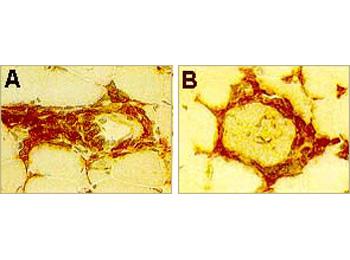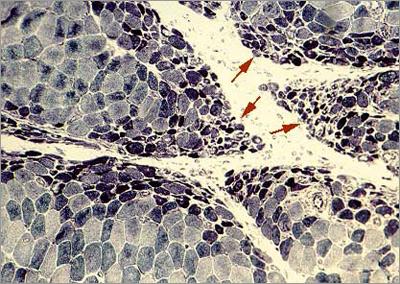Symptoms

Symptoms of dermatomyositis are almost identical to those of polymyositis. The diseases differ in that dermatomyositis is accompanied by a skin reaction that is manifested as a rash, commonly seen over the face, chest, and knuckles. The other major difference between the two disorders is that one-third of the cases of dermatomyositis occurring in older individuals is associated with an undiagnosed or a known underlying cancer. Once the diagnosis of dermatomyositis is made, attempt at ruling out the presence of a cancer should be implemented. These procedures include a chest x-ray, mammogram in women, prostate exam in men, flexible sigmoidoscopy, and possibly a CT scan of the abdomen with contrast.
Diagnosis

The first step in the diagnosis of dermatomyositis is eliciting a history and physical examination compatible with the features seen in the disease. The history and examination are usually identical to those of polymyositis except for the presence of the characteristic skin manifestations. The same diagnostic steps that were used in polymyositis are also employed in dermatomyositis; specifically, blood for CPK level and an electromyogram. A muscle biopsy is performed which shows, in addition to the inflammation, a characteristic pattern of atrophy of muscle fibers (perifascicular atrophy). In contrast to polymyositis, the inflammation is usually located in the immediate vicinity of blood vessels (perivascular inflammation). Once the diagnosis of dermatomyositis is made and an underlying cancer has been ruled out, treatment is initiated in a similar manner as in polymyositis.








